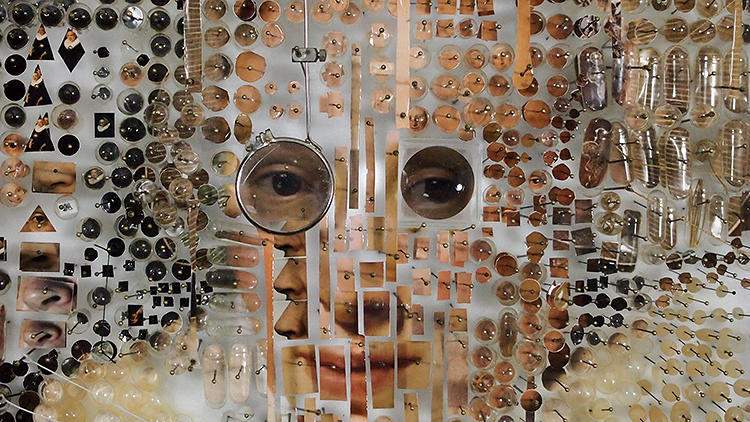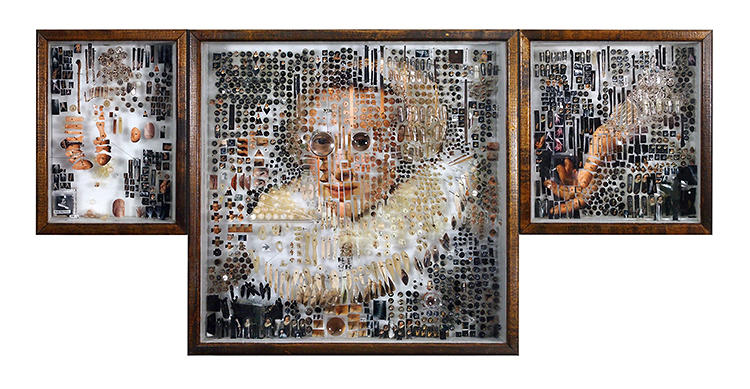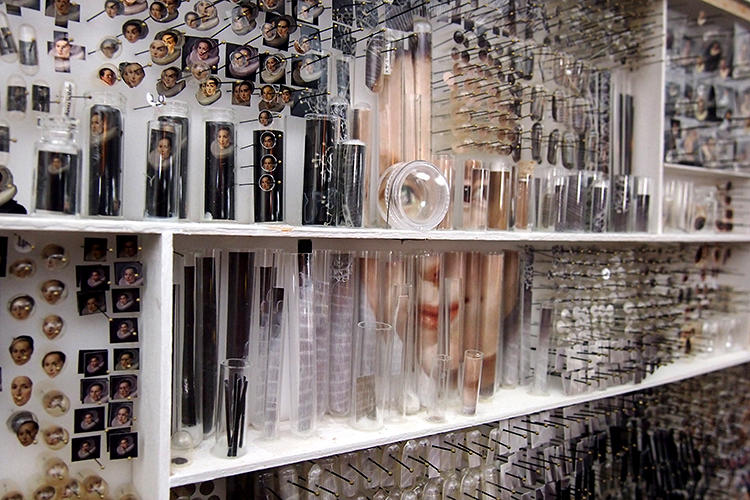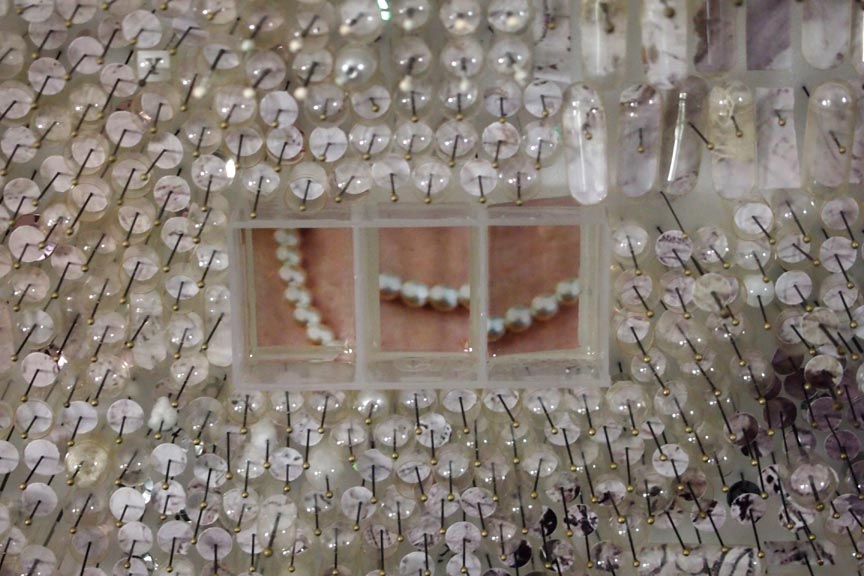The Dutch Masters Recreated as Astonishing Entomological Displays
Seventeeth-century portraits get a beautiful and complex 21st-century update.
Lately, the works of the Dutch masters are receiving some fabulously intense, borderline-OCD flattery from a man who takes the art of imitation to the next level. Creative genius and 17th-century portrait subject stalker Michael Mapes gathers very specific objects and uses them to form intriguing, almost sculptural 21st-century replicas of famous portraits.
Look closely at one of Mapes' pixelated images of a face originally painted by Rembrandt or Nicolaes Eliasz Pickenoy, and you'll be rewarded with unexpected findings. The larger picture is composed of all manner of objects, from fragments of human hair to makeup samples, glass vials, gelatin capsules, costume jewellery, contemporary photographs and more. The variety of materials and attention to detail is quite astounding.
But this is no random assemblage. Building on a 'pseudo-scientific method' developed for earlier works, after choosing a high-resolution scan of a painting from the archives of Amsterdam's Rijksmuseum, Mapes researches the life of his subject to get a sense of their character. This will inform the eclectica that will make up the physical recreation, and the end result is akin to an entomological display of insect specimens, with many tiny items pinned to a plain backdrop for inspection.
It's much like viewing a collection of preserved butterflies, raising an implicit question about how we scrutinise historical artwork, people and visual culture in general. Broader meanings are also embedded in the compositional material of the image — for example, we might ask, how is a gelatin capsule relevant to this character? — making these portraits into extreme meta-portraits.
Three artworks from the series will be shown in Montana at Yellowstone Art Museum starting this March, in an exhibition of innovative forms of portraiture entitled Face to Face. See more of the artist's works at




Via Fast Co.Design.









